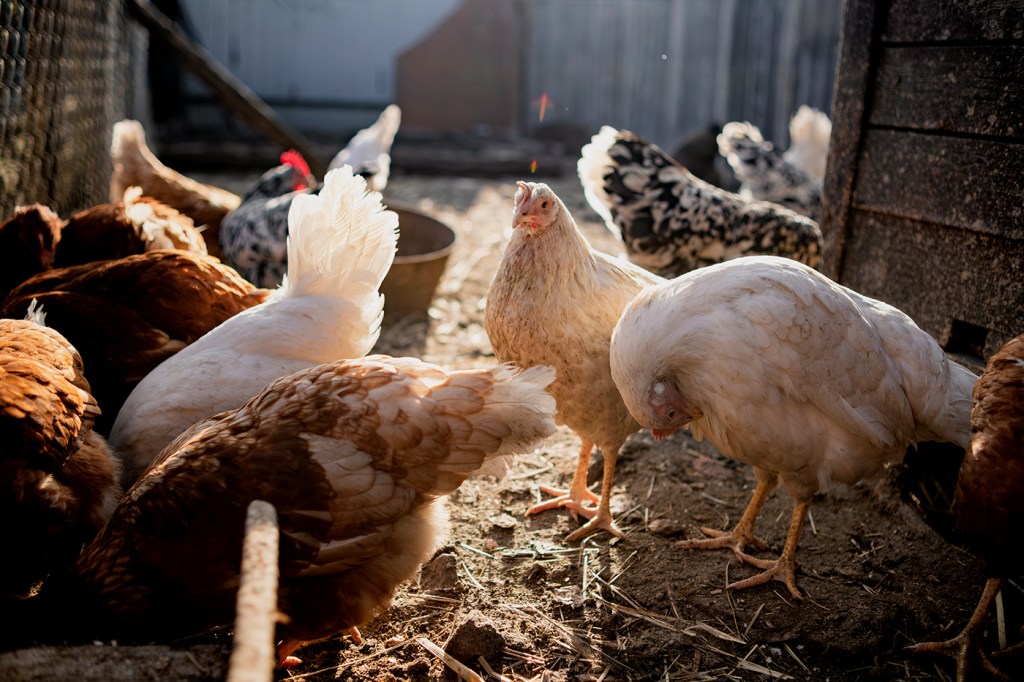Is your backyard chicken flock putting you at risk of bird flu?

Interest in raising backyard chickens grew rapidly during the COVID-19 pandemic and continues due to the ever-increasing cost of store-bought eggs.
But the same H5N1 bird flu that has led to the culling of millions of chickens, ducks and other birds in commercial flocks also has impacted backyard flocks in every state since the outbreak began in February 2022, including more than 20 states in the last 30 days, according to the USDA.
And while backyard flocks tend to be much smaller than commercial enterprises, they account for 37% of the 113 flocks where birds have been tested and confirmed to have bird flu.
In early January, Louisiana officials reported that an older male resident with underlying health issues exposed to backyard and wild birds had become the first and so far only person in the U.S. to die after contracting bird flu.
“The risk to the public is still low,” says Samuel Scarpino, an expert in pathogen surveillance and director of Northeastern’s AI + Life Sciences.
“But if you have chickens or ducks, even in small numbers, you need to be really cautious,” he says.
Wear a mask
Consider wearing an N95 mask when cleaning out backyard coops, Scarpino says. “You’re in a confined environment and you’re kicking up a lot of stuff. Bird droppings contain all kinds of nasty stuff, viruses and bacteria.”
The same goes for hunters cleaning game birds, he says.
Gloves are another source of protection, as is washing your hands thoroughly after handling birds or cleaning up after them, Scarpino says.
Since the COVID-19 pandemic, many people have easy access to masks and gloves “so it’s really not that big of a deal to put them on,” he says. “I always think about how annoying (the precaution) is versus what the risk is.”
Handling dead birds
It’s also important to take a few safety steps when handling dead chickens from backyard flocks, or wild birds, Scarpino says.
“If I’m picking up a dead bird, which I don’t do very often — probably once a year in our garden plot or something — I put on an N95 mask and a pair of gloves and use a shovel,” he says.
The USDA advises people who don’t have access to disposable gloves to turn a plastic bag inside out and use it to pick up the carcass, then double bag it and dispose of it in the trash.
Bird flu or not, “I assume it might have something that could make me sick,” Scarpino says.
The CDC says that “infected birds shed avian influenza A viruses in their saliva, mucus and feces,” adding that people should stay away from sick poultry birds or wild birds.
Editor’s Picks
What does avian flu look like in backyard flocks and pet birds?
According to the American Veterinary Medical Association, the signs for infection are many.
They include low energy or appetite, purple discoloration, body swelling, misshapen eggs or reduced egg production, nasal discharge, sneezing, diarrhea, loss of coordination and sudden death.
The AVMA advises people who have backyard flocks to keep the birds’ food, drinking water, equipment and other supplies secure and out of the reach of wild birds or rodents, and to call a veterinarian if they have concerns about their birds’ health.
Scarpino says backyard flock owners who end up with two or more dead chickens or ducks without any sign of an animal attack might also want to contact their local health department to report the deaths.
What about bird feeders
Thorough hand washing and the use of disposable gloves can help people who handle bird feeders to protect themselves from H5N1, also known as HPAI for Highly Pathogenic Avian Influenza.
Masking up around a bird feeder is less important than cleaning a chicken coop because the feeders are outdoors and not in a closed environment, Scarpino says.
But remember that “in a couple of months from now the birds are going to be migrating back from the South and they are going to bring bird flu with them,” he says.











